This Chinese bowl, which measures 2.75 inches high and 5.75 inches diameter, is decorated with flowers, pagodas, and bridges in the Japanese Imari style and palette. It was made for export to Europe in the early to mid 1700s with just the blue underglaze decoration, but soon after arriving, it was overpainted in red and gold to keep up with the public’s new demand for colorful porcelain. This method of overpainting is often referred to as clobbering.
You may wonder why I am featuring a bowl that appears to have had its broken halves merely glued together. But the “Mifs Cox” red mark on the underside – she was most likely the original owner of the bowl – gives insight into how the bowl was repaired. An early form of ceramic repair practiced in England during the late 1700s to middle 1800s was called “china burning,” in which broken ceramics were re-fired at a low temperature, causing the broken pieces to fuse together. The most renowned china burner was Edward Combes of Queen Street, Bristol, who signed his pieces on the underside in red script, similarly to the mark on this bowl. I have a few examples of pieces repaired and signed by Combes and will post them in the coming months.
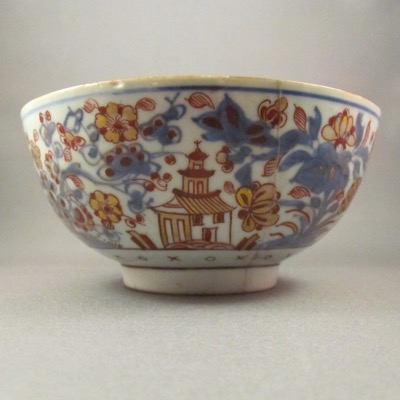
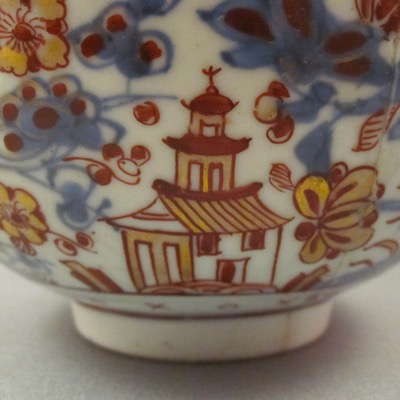
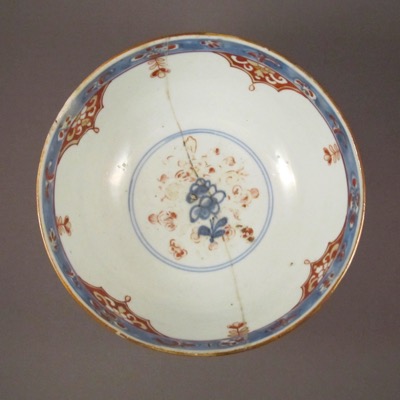
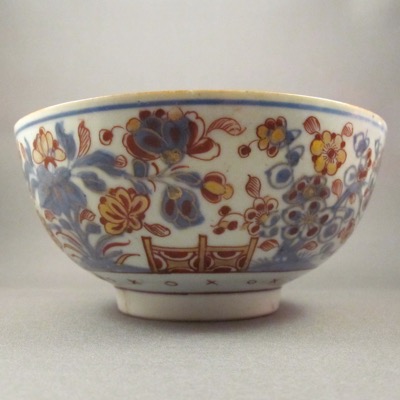
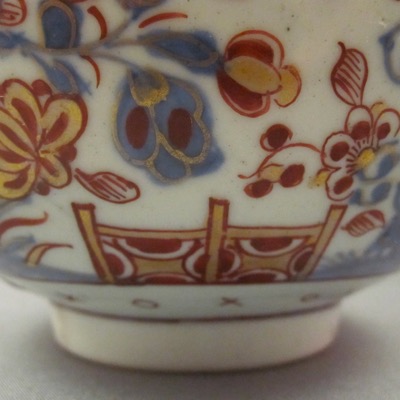

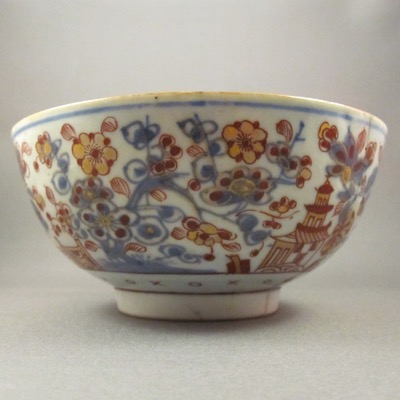

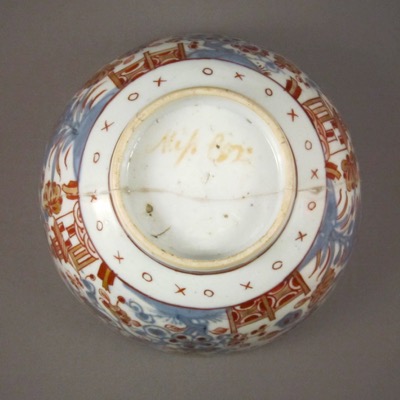

Fascinating! Look forward to more examples!
Andrew!!! I love all the interesting, well illustrated tidbits I learn from you, and, without putting forth any effort!
XO. Carol
This palace has been on my list to visit for years. Loved your story & pix!